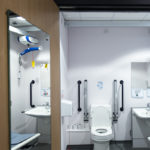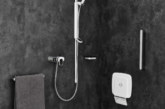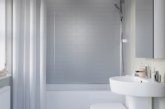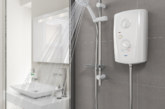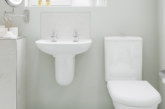Claire Haymes from Closomat says due consideration should be given to toilet facilities when transforming education buildings.
The four Cs of transforming schools are creativity, critical reflection, communication, and collaboration. But should it be five Cs?
The missing ‘C’ affects toilets, and can actually be one of a number of choices: continence, culture, (in)clusion. You may think I’m overstating a point but toilet provision in schools is more important than is often understood or appreciated, and it can potentially impact positively on exam results.
Before we look at the facts and figures, can I prevail on you to think back to your own school days, and the toilets? What are your memories? Few of us have positive recollections: toilets blocked with paper, smelling of urine, the embarrassment of having to ask in class to be ‘excused’ – and sometimes the teacher refusing such permission.

photographer: Fraser Band
It is claimed that good toilet provision improves a child’s willingness to learn, their concentration, their behaviour and attendance (ERIC the children’s bladder and bowel charity). That will reflect in the overall school grades. There is also proof that if the toilets are good, pupils will accord the areas respect, particularly if they are involved from the outset in developing a toilet policy.
ERIC claims that 10% of youngsters and adolescents have a continence issue. It is also important to bear in mind the high number of infants starting school still wearing nappies. One child in 20 under the age of 16 is disabled – an increase of over 60% in 25 years. Some 60% of statemented children are now in mainstream schooling. The disabled student population is growing too – now approximately 20,000 people entering higher education have a limitation.
Yet according to a survey by ERIC, almost 60% of schools do not have a disabled toilet. This flouts not just best practice guidelines, but basic Building Regulations (Approved Document M). The latest Building Regulations (2015) state toilet provision needs to be suitable for all people using the building. Even if there is space for just one WC, it should be a unisex, accessible facility. Further, the Department for Education has updated its building guidelines.
Building Bulletin requirements
Building Bulletin 104 replaces BB102, and applies to new-build and refurbishment/ conversion projects in a SEND educational setting. It addresses ambulant special, non-ambulant special, alternative provision (AP), specially resourced provision (SRP) and designated unit (DU) school accommodation. Each scenario has its own specific requirements, but still reflects Approved Document M – at very least a unisex, wheelchair accessible WC.
In broad brush terms, special schools where students are less independent should have one WC for every 10 pupils; in environments where the children are independent, the ratio is 1:20. But in all settings there should be at least one accessible toilet on each floor. For all settings, separate toilets for staff (1:25 members of staff) and at least one accessible toilet for staff or visitors should be provided.
Facilities should also be of the right size – the new guidance is that fewer well-placed rooms of the right size work better than an over-provision of undersized rooms. In addition, hygiene rooms (i.e. a WC facility with fixed hoist, changing bench, shower) should be provided, again, applying a broad brush approach, on the ratio of 1:12 non ambulant pupils.
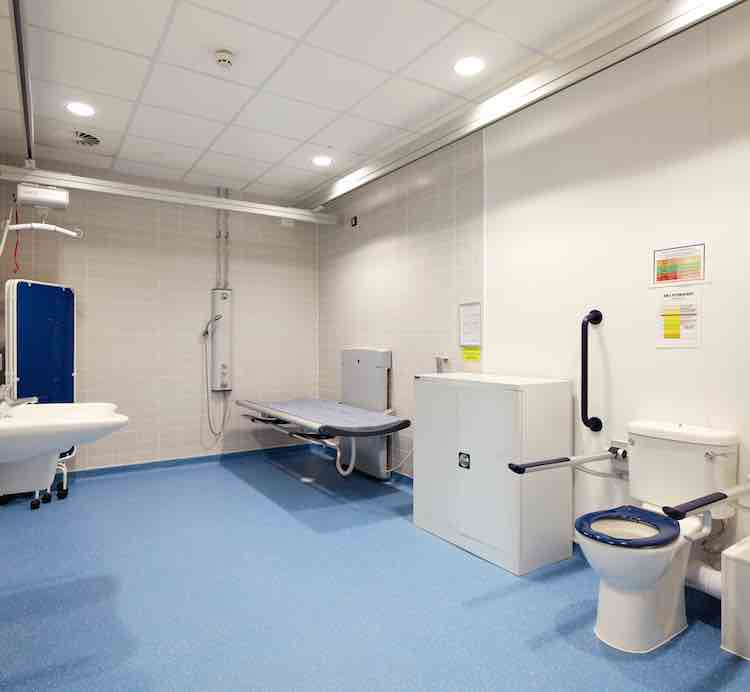
Industry guidelines
Building Bulletin 103 replaces the previous Building Bulletins 88 and 89 with regard to area guidelines for mainstream primary and secondary schools. It requires one WC for every 20 pupils in total plus separate staff toilets. It also requires inclusion of a hygiene room. The thinking is not only to address the needs of the statemented children attending mainstream schooling, but to accommodate particular religious, cultural or gender orientation requirements, and to optimise the suitability and usability of the premises beyond the school day, by the community.
The additional fixtures of a hygiene room help enhance school life for everyone involved. For those that need help, there is the additional space to accommodate pupil and an adult to help them if needed, and/or to manoeuvre a wheelchair. There are the additional cleaning resources to address ‘little accidents’, to avoid the ignominy and indignity for the child of having to spend the rest of the day smelling and/or in soiled clothing.

Shower toilets
Some education providers are already altering fixtures and fittings to further extend the scope of their facilities, by replacing one conventional WC with a shower/ wash dry toilet. Doing so will help them ensure schools are set up to meet any future SEND requirements without the need for retrospective adaptation. Some education provider’s also maintain this solution enhances a child’s personal skills, enabling them to ‘go’ without having to be wiped by a member of staff afterwards. It protects their privacy and improves health and hygiene: one school in particular reports a reduced incidence of posterial rashes among its special needs pupils as a result.
The benefits of such a fixture are acknowledged by the British Standards Institute. Its accessibility Standard BS8300:2018 notes inclusion of a shower/ wash dry toilet can be of benefit in assisted accessible facilities. It particularly refers to a Changing Places toilet, which is in essence a hygiene room that is accessible by the public, not just users of a specific building.
Under the Standard, schools are included in the list of specific building types which should provide such a toilet facility. It is an advisory recommendation, not obligatory – at present. However, there is a Private Members Bill going through Parliament that seeks to make Changing Places a legal requirement in large buildings to which the public have access, or where they can spend a long time. If a hygiene room has been installed, as is recommended by the DoE, then in theory all a school has to do to comply with the new legislation as/when it is enacted, is to register the facility with the Changing Places campaign. It reinforces the message that providing appropriate toilets, everyone benefits – pupils, staff, and the community.
Claire Haymes is CDM Compliance & Project Co-Ordinator at Closomat

